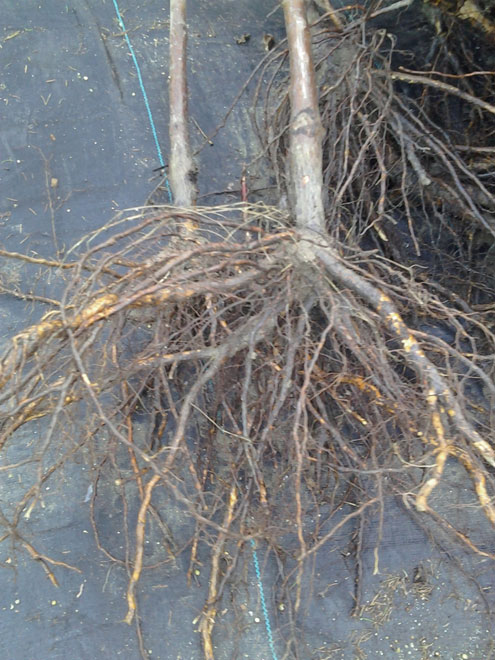By Tony Tomeo
Before all the Christmas trees were sold and relinquished their space, the smaller types of bare root stock started arriving in local nurseries. Blackberries, raspberries, blueberries, gooseberries, currants, grapes, strawberries, rhubarb and asparagus, may have been available for a while. More substantial bare root stock, such as roses, fruit trees and ornamentals, may already be arriving.
Bare root stock is known as such simply because its roots are bare. It gets dug as dormancy begins in autumn, and separated from the soil it grew in. It remains dormant as it gets transported to nurseries, and then to home gardens where it ultimately gets planted. It is completely unaware of the otherwise unsurvivable processes until it wakes up to resume growth in a new home in spring.
The roots of some of the smaller bare root plants and roses, as well as some fruit trees, are bagged in damp sawdust. Most bare root fruit trees, as well as some of the smaller plants, are merely heeled-in to damp sand, and upon purchase, pulled from the sand and bagged without packing material. Roots can soak in water for a few days prior to planting, but will not survive dry exposure.
There are several advantages to bare root stock. It is significantly less expensive than canned (potted) stock. It is also easier to get from a nursery and into the home garden. Branch structure can develop directly in a garden, rather than adapt from how it developed earlier in a nursery. New roots disperse directly into the soil, so need not recover from former confinement within a can (pot).
(Almonds are nuts that are actually stones of leathery fruits that dry and separate from the stones as hulls.)
Highlight: Forsythia
This may seem to be three months early, or an entire season out of season; but this is when bare root forsythia, Forsythia X intermedia, gets planted. Even so, the smaller of new bare root plants will bloom with only a few flowers early in their first spring, so will not produce their famously profuse and garishly bright yellow bloom for another year and three months. They will be worth the wait.
Flowers are small but very abundant. They bloom as winter turns to spring, before there is any new foliage to interfere with their splendor. Foliage develops as bloom finishes, and if the weather is right, it might get somewhat colorful in autumn. The simple paired leaves are about two or perhaps three inches long. Big plants should stay less than ten feet tall, but can get taller if lightly shaded.
Pruning should be done after bloom rather than before, and from the inside out rather than from the outside in. Dormant pruning, although more horticulturally correct, eliminates some of the canes that would otherwise bloom in spring. After bloom, older overgrown canes that are beginning to deteriorate should be pruned to the ground to promote development of new canes to replace them.
•••
Horticulturist Tony Tomeo can be contacted at tonytomeo.com.
